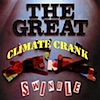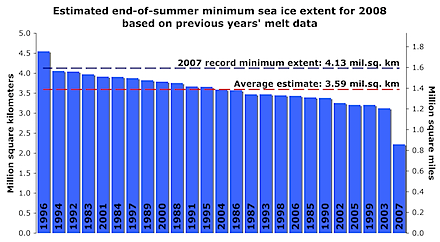 Occasionally my rural postie (hi Jenny!) brings me something more interesting than bills. Last week, I received a package from Sky TV. Packed in a brown paper bag that looks remarkably like an airline sick bag, sealed with a “Warning: content may offend” sticker, was a DVD copy of The Great Global Warming Swindle, the sceptic “documentary” that caused a furore* when first shown on Channel 4 in the UK last year, and which Prime plan to show here in the next few weeks. Full marks for creative PR, but a definite fail for factual inaccuracies in the promotional leaflet they sent out (copy here). Apparently “the theory that man-made emissions of CO2 have a discernable (sic) effect on climate lacks robust scientific evidence”, “there’s overwhelming evidence indicating that it’s solar activity that determines temperature”, and “everything you’ve ever been told about Global Warming is probably untrue”. Sorry Prime, none of those statements are true, and the Advertising Standards Authority might have a thing or two to say about that…
Occasionally my rural postie (hi Jenny!) brings me something more interesting than bills. Last week, I received a package from Sky TV. Packed in a brown paper bag that looks remarkably like an airline sick bag, sealed with a “Warning: content may offend” sticker, was a DVD copy of The Great Global Warming Swindle, the sceptic “documentary” that caused a furore* when first shown on Channel 4 in the UK last year, and which Prime plan to show here in the next few weeks. Full marks for creative PR, but a definite fail for factual inaccuracies in the promotional leaflet they sent out (copy here). Apparently “the theory that man-made emissions of CO2 have a discernable (sic) effect on climate lacks robust scientific evidence”, “there’s overwhelming evidence indicating that it’s solar activity that determines temperature”, and “everything you’ve ever been told about Global Warming is probably untrue”. Sorry Prime, none of those statements are true, and the Advertising Standards Authority might have a thing or two to say about that…
The Great Global Warming Swindle is not a documentary, it’s a one-sided piece of propaganda made on behalf of climate sceptics that alleges that the world’s climate scientists are lying about global warming. It contains glaring inaccuracies, distortions of fact, and misrepresentations of the real state of climate science (and yes, I have watched it). It’s been the subject of 250 complaints in the UK (a ruling is expected from OFCOM, the UK broadcasting standards body, any day now), and the version being shown here still contains factual errors and distortions that were drawn to the film-maker’s attention at the time TGGWS was shown in Australia (July last year). It’s worth taking a moment to watch ABC’s science correspondent Tony Jones’ interview with Martin Durkin, the film’s producer (here and here). Neither of the two graphs Jones mentions have been corrected in the version Prime apparently plans to show in NZ. Nor have any of the serious scientific errors pointed out by Aussie scientists last year (Jones, D., Watkins, A., Braganza, K., and Coughlan, M. (2007), “The Great Global Warming Swindleâ€: a critique. Bull. Aust. Meteor. Ocean. Soc., 20(3) 63-72 – available as html, or PDF), or summarised nicely by Bob Ward at Climate of Denial. The Australian Science Media Centre also has a good resource page on the film. It remains a fundamentally flawed work that fails to meet any reasonable standard of accuracy.
Prime are clearly hoping to stir up a bit of controversy and boost their audience. They plan to show a “debate” following the screening, pitting cranks against scientists. By doing that they’re playing straight out of the sceptic playbook. They’re “teaching the debate”, when the debate has long since moved on to more interesting and relevant stuff. And they’re poisoning the well of public debate by showing material that’s been repeatedly demonstrated to be wrong. Prime should insist that Durkin corrects all the errors before the film is shown here, and identify it clearly as one man’s opinion, not a factual documentary. To provide some semblance of balance, they should drop the idea of a debate and replace it with a counterpoint from NZ’s climate scientists.
Freedom of speech should not extend to freedom to lie. The climate cranks want to make a political argument about climate policy – do nothing, or not very much, and then only slowly – but that is a political not a scientific argument. I’m happy to defend their right to hold their political opinions, but making up evidence in support of their arguments is simply wrong.
* Good summary of the row, and comprehensive links, at medialens.




